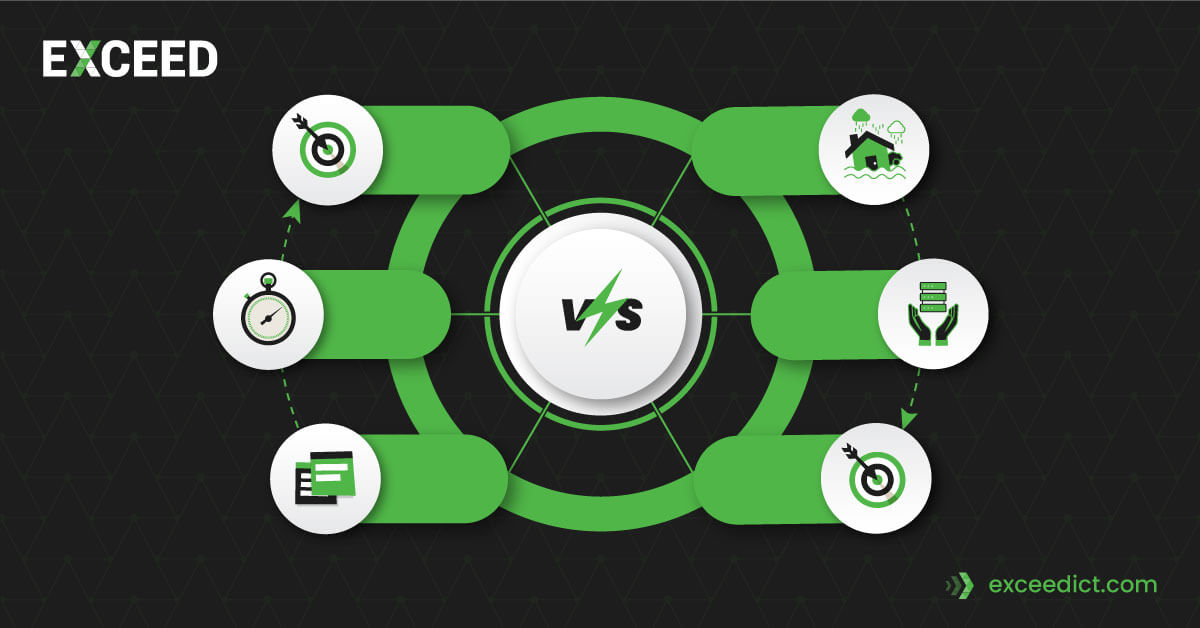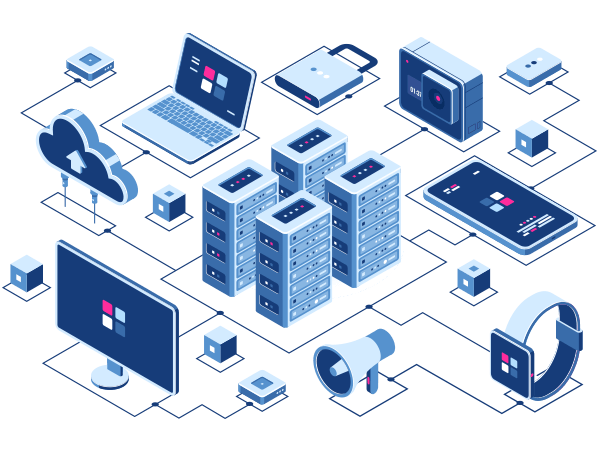
Business Continuity vs Disaster Recovery
In today’s fast-paced and interconnected world, businesses face a multitude of risks that can disrupt their operations.
Two key strategies that organisations employ to mitigate these risks and ensure resilience are Business Continuity Planning (BCP) and Disaster Recovery Planning (DRP). While BCP and DRP are often used interchangeably, they represent distinct approaches to managing disruptions.
This article aims to shed light on the differences between Business Continuity Planning and Disaster Recovery Planning, providing insights into their importance, key components, and practical implementation.
Unveiling the Distinctions of Business Continuity Planning vs Disaster Recovery Planning
Business Continuity Planning: Building a Resilient Framework
Business Continuity Planning (BCP) is a proactive approach that focuses on maintaining essential business functions during and after a disruption. It encompasses a comprehensive set of strategies, policies, and procedures to ensure that critical operations continue seamlessly, even in the face of adverse events. Business Continuity Planning aims to minimise downtime, safeguard assets, and protect the organisation’s reputation.
Key Components of Business Continuity Planning:
- Business Impact Analysis (BIA): BIA assesses the potential impact of disruptions on different business functions and processes. It helps prioritise critical activities and allocate resources effectively.
- Risk Assessment and Management: This component involves identifying potential risks, evaluating their likelihood and impact, and implementing risk mitigation measures.
- Continuity Strategies: BCP develops strategies to ensure the continuity of critical operations. These strategies may include establishing alternate work locations, redundant systems, and backup data centres.
- Crisis Communication Plan: Effective communication is vital during a crisis. BCP includes a communication plan to keep stakeholders informed and ensure a coordinated response.
- Training and Testing: BCP emphasises regular training and testing of plans and procedures to enhance preparedness and identify areas for improvement.
Disaster Recovery Planning: Restoring IT Infrastructure
 Disaster Recovery Planning (DRP) is a subset of Business Continuity Planning that specifically focuses on the recovery of IT infrastructure and systems following a disruption.
Disaster Recovery Planning (DRP) is a subset of Business Continuity Planning that specifically focuses on the recovery of IT infrastructure and systems following a disruption.
DRP primarily addresses technological risks and aims to restore critical IT services swiftly. It involves comprehensive strategies, policies, and procedures to minimise downtime and ensure data integrity.
Key Components of Disaster Recovery Planning:
- Backup and Recovery Procedures: DRP establishes protocols for regular backups and secure storage of critical data. It also defines procedures for data recovery and restoration in the event of a disruption.
- Alternate IT Infrastructure: DRP includes plans for redundant IT infrastructure, such as backup servers, data centres, and cloud-based solutions. These alternatives ensure continuous availability of IT services.
- Testing and Validation: Regular testing and validation of disaster recovery plans are crucial to identify vulnerabilities and ensure their effectiveness. DRP emphasises the simulation of various disaster scenarios to assess the organisation’s readiness.
- Vendor and Supplier Coordination: DRP involves establishing effective relationships and communication channels with vendors and suppliers. This ensures seamless collaboration during the recovery phase and minimises delays.
FAQs about Business Continuity Planning vs Disaster Recovery Planning
 Q: What is the primary objective of Business Continuity Planning?
Q: What is the primary objective of Business Continuity Planning?
A: The primary objective of Business Continuity Planning is to ensure the continued operation of critical business functions and minimise the impact of disruptions on an organisation.
Q: Is Disaster Recovery Planning a subset of Business Continuity Planning?
A: Yes, Disaster Recovery Planning is a subset of Business Continuity Planning that specifically focuses on the recovery of IT infrastructure and systems.
Q: How often should Business Continuity Plans be tested?
A: Business Continuity Plans should be tested regularly, at least annually, to validate their effectiveness and identify areas for improvement.
Q: What role does risk assessment play in Business Continuity Planning?
A: Risk assessment helps identify potential risks and their potential impact on business operations. It enables organisations to allocate resources effectively and prioritise critical activities.
Q: Are Business Continuity Planning and Disaster Recovery Planning only relevant to large organisations?
A: No, both Business Continuity Planning and Disaster Recovery Planning are essential for organisations of all sizes. Disruptions can affect businesses irrespective of their scale, and proactive planning is crucial for resilience.
Q: How can organisations ensure employee readiness for business disruptions?
A: Organisations can ensure employee readiness through regular training sessions, awareness campaigns, and drills that simulate various crisis scenarios. This helps familiarise employees with their roles and responsibilities during disruptions.
Conclusion
Business Continuity Planning and Disaster Recovery Planning are two critical strategies that organisations employ to ensure resilience in the face of disruptions. While Business Continuity Planning focuses on maintaining essential business functions, Disaster Recovery Planning specifically addresses the recovery of IT infrastructure.
Both approaches require careful consideration of risks, effective strategies, regular testing, and coordination among stakeholders. By implementing robust Business Continuity Planning and Disaster Recovery Planning, organisations can minimise downtime, protect assets, and demonstrate their commitment to the seamless provision of products and services, even in challenging times.
You may also like to know more about
- What is Business Continuity Planning? Importance, Risk Assessment, & Core Objectives.
- Business Continuity Plan (BCP) Checklist.
- Disaster Recovery Planning To Ensure The Connectivity in Crisis.
- Wireless Emergency Kit: Staying Connected When it Matters.
- Safeguard Your Business with a Network Disaster Recovery Kit.
- 5G Mobile Broadband Kits to Supercharge Your Internet.
Stay connected with EXCEED ICT
Stay connected with EXCEED ICT by joining our social networks (given at footer). Get the latest updates, news, and tips for enterprise device deployment. Follow us on Twitter, Facebook, and LinkedIn for the best enterprise device deployment solutions.
Help us to improve our enterprise by rating us on Google Maps. Your feedback and comments are valuable to us and will be used to make our services even better.



 Q: What is the primary objective of Business Continuity Planning?
Q: What is the primary objective of Business Continuity Planning?